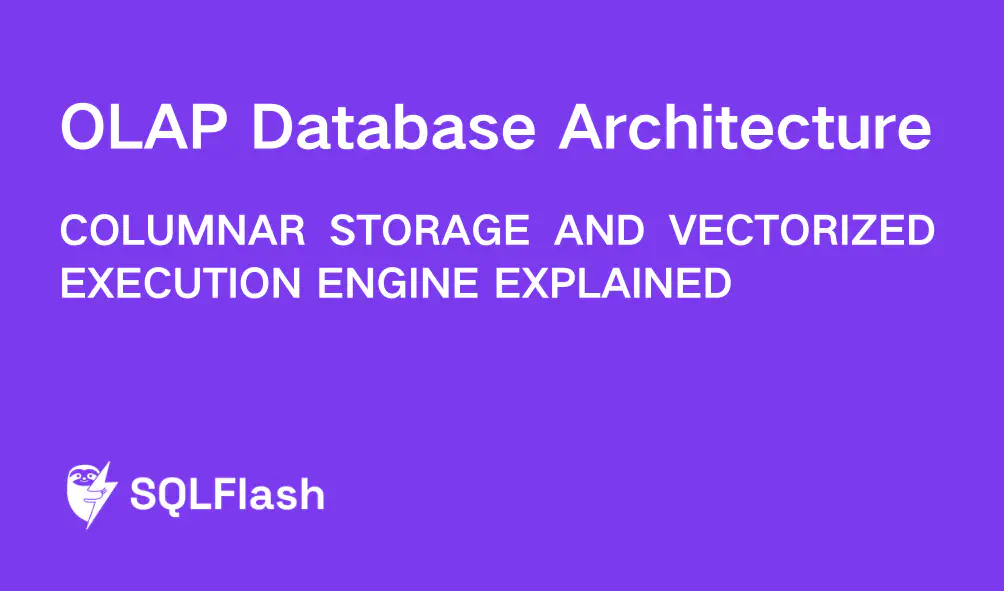OLAP Database Architecture: Columnar Storage and Vectorized Execution Engine Explained


In the era of big data and modern analytics, OLAP (Online Analytical Processing) database architecture has become increasingly important. Its core advantages lie in two key technologies: columnar storage and vectorized execution engines. This article will delve into how these two components work together to enable fast and efficient analytical queries, while also analyzing their critical role in SQL optimization.
OLAP, as the name suggests, is a database system designed to support complex data analysis and decision-making. Unlike OLTP (Online Transaction Processing), which focuses on transactional operations and frequent writes, OLAP primarily handles large-scale, complex analytical queries, emphasizing read operation efficiency and response speed.
To meet these demands, OLAP databases adopt an architecture fundamentally different from traditional relational databases, storing data by columns and employing specialized execution engines to accelerate queries.
Traditional row-oriented storage stores data rows sequentially, making it suitable for frequent updates and inserts but creating significant performance bottlenecks in analytical scenarios:
| Feature | Row Storage | Column Storage |
|---|---|---|
| Data Layout | Stores data rows sequentially | Stores data columns sequentially |
| Use Case | OLTP, high-frequency writes | OLAP, large-scale scans and aggregations |
| I/O Characteristics | Reads unrelated data in bulk | Reads only the required columns |
| Compression Efficiency | Low (mixed data types) | High (homogeneous data types) |
Columnar storage stores data of the same column in contiguous space, allowing queries to access only the relevant columns, significantly reducing disk I/O and memory loading. For example, when querying the average “user age,” columnar storage only needs to read the age column without scanning entire rows.
Additionally, homogeneous data aggregation enables more efficient compression, achieving smaller storage sizes and faster decoding speeds through techniques like dictionary encoding, run-length encoding, and delta encoding.
Vectorized execution refers to processing data in batches (typically vectors) rather than row by row, fully leveraging modern CPU SIMD instructions and cache structures.
Take the following SQL aggregation as an example:
| |
country='USA' and then accumulates the calculation.age and country column data at once, performing batch filtering and aggregation, drastically improving execution efficiency and CPU utilization.This batch processing approach reduces function calls and memory access, making it particularly suitable for large-scale data scans and computations in OLAP scenarios.
The columnar storage and vectorized execution engine technologies in OLAP database architecture are at the heart of modern big data analytics. Understanding their workings not only provides insight into database performance advantages but also offers valuable ideas for SQL tuning and architectural design in practical applications. With advanced AI tools like SQLFlash, businesses can easily optimize query performance and focus on core business innovation.
This article is well-structured, integrating technical and practical insights, making it an ideal SEO piece for the SQLFlash website blog, effectively attracting target users seeking OLAP database optimization and technical solutions.
SQLFlash is your AI-powered SQL Optimization Partner.
Based on AI models, we accurately identify SQL performance bottlenecks and optimize query performance, freeing you from the cumbersome SQL tuning process so you can fully focus on developing and implementing business logic.
Join us and experience the power of SQLFlash today!.